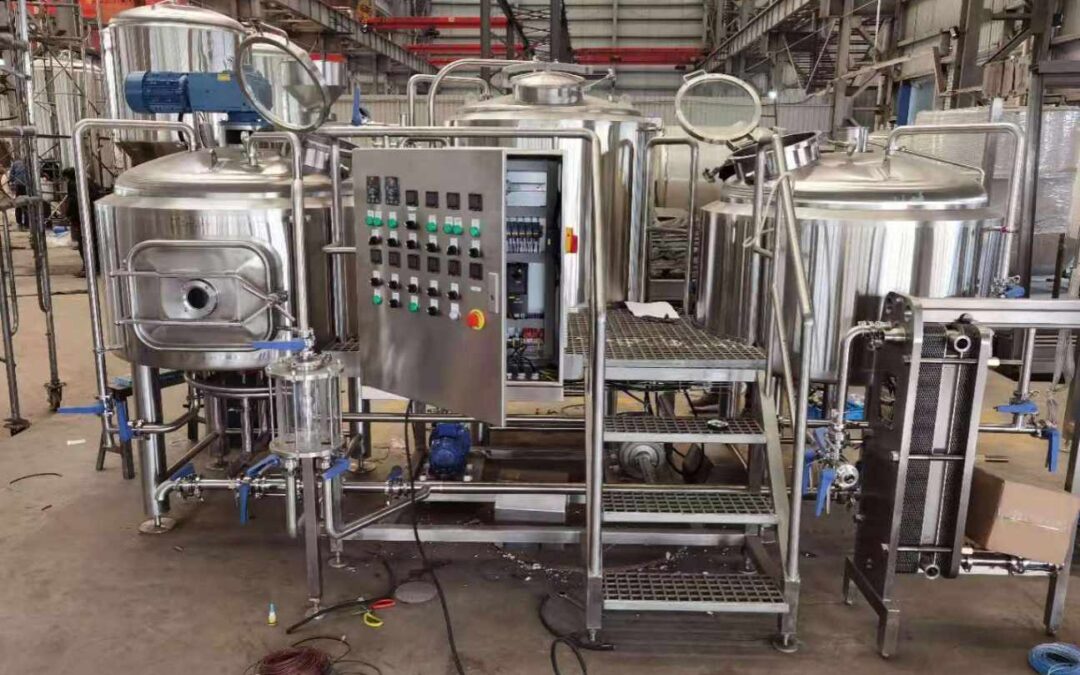Horizontal Brite tanks, also known as horizontal Brite beer tanks or BBT, are vessels used in the beer brewing industry to store and condition beer before it is packaged for distribution. While the specific history of horizontal Brite tanks is not extensively documented, their development and use can be understood within the broader context of beer brewing and storage techniques.
Beer brewing and storage have a long history dating back thousands of years. Traditional brewing methods involved fermentation and storage in wooden barrels or clay pots. These vessels were typically vertical in shape and were used for both fermentation and aging of the beer.
The development of modern horizontal Brite tanks can be attributed to advancements in brewing technology and the growing demand for consistent and efficient beer production. The use of horizontal tanks became more prominent with the rise of the industrial brewing process in the 19th century.
One of the key benefits of horizontal Brite tanks is their ability to provide a large surface area for contact between the beer and the tank, facilitating the settling and clarification of the beer. The horizontal orientation allows for the sediment and impurities to settle at the bottom of the tank, while the clear beer can be drawn off from the top.
Moreover, horizontal Brite tanks offer advantages in terms of space utilization and accessibility. They can be stacked or arranged in a row, allowing for efficient use of floor space in a brewery. This layout also simplifies the process of transferring beer between tanks and facilitates the implementation of automated systems for temperature control and monitoring.
Over time, the materials used in the construction of horizontal Brite tanks have evolved. Early tanks were often made of wood, such as oak, but this was later replaced by more hygienic and durable materials like stainless steel, which is now the most common material used in the construction of Brite tanks.
In recent years, with the growth of craft breweries and the demand for smaller-scale brewing equipment, horizontal Brite tanks have become more accessible to a wider range of brewers. They are available in various sizes and configurations to accommodate the needs of different breweries, from large-scale industrial operations to small craft breweries.
The history of horizontal Brite tanks reflects the ongoing evolution of beer brewing techniques and the quest for improved efficiency, quality, and consistency in the production of beer. These tanks have become an integral part of modern breweries, allowing brewers to store, condition, and clarify their beer before it reaches consumers. In fact, horizontal Brite tanks offer several benefits for breweries.
Advantages Of Using Horizontal Brite Tanks:
Space Efficiency: Horizontal Brite tanks are designed to maximize floor space utilization. They can be stacked or arranged in a row, allowing for efficient use of limited space in a brewery. This is especially beneficial for breweries with space constraints or those looking to expand their production capacity without requiring significant structural changes.
Settling and Clarification: The horizontal orientation of these tanks promotes the settling and clarification of beer. Sediment and impurities settle at the bottom of the tank, allowing the clear beer to be drawn off from the top. This process helps in achieving the desired clarity and quality of the final product.
Ease of Cleaning and Sanitization: Horizontal Brite tanks are typically constructed using stainless steel, which is easy to clean and sanitize. The smooth interior surfaces of the tanks minimize the risk of microbial contamination and make cleaning and sanitization processes more effective. This is crucial for maintaining the quality and safety of the beer.
Temperature Control: Horizontal Brite tanks can be equipped with temperature control systems, allowing brewers to maintain precise temperature conditions during the conditioning and storage phases. This feature is important for controlling yeast activity, promoting flavor development, and maintaining the overall quality of the beer.
Accessibility and Maintenance: The horizontal layout of these tanks makes them easily accessible for maintenance and inspection purposes. Brewers can access different parts of the tank, including valves, fittings, and sampling points, without the need for specialized equipment or extensive manual handling.
Scalability: Horizontal Brite tanks are available in a range of sizes and configurations, making them suitable for breweries of various scales. They can accommodate the needs of both small craft breweries and large-scale industrial operations. The modular nature of these tanks also allows for future expansion and the addition of more tanks as production demands increase.
Integration with Automation: Horizontal Brite tanks can be seamlessly integrated into automated brewing systems. They can be connected to monitoring and control systems for temperature regulation, pressure management, and data logging. Automation helps improve process consistency, reduces manual labor, and enhances overall operational efficiency.
Aesthetics and Presentation: Horizontal Brite tanks can add an aesthetic appeal to a brewery’s taproom or public-facing areas. Their sleek and modern appearance, often coupled with polished stainless steel finishes, can enhance the visual appeal of the brewing facility and create an engaging environment for visitors.
These benefits collectively contribute to improved efficiency, quality control, and production capabilities in a brewery, making horizontal Brite tanks a valuable asset in the brewing process.

